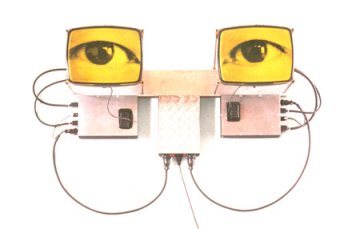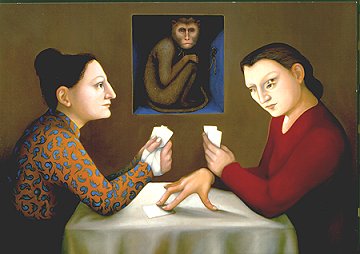AUSTIN, TEXAS IS EXHILARATING!
An introduction to a city where the fine arts are bursting into bloom
By Hall Groat II
| Although the pace of life is leisurely compared to most eastern
cities, the atmosphere is charged with youthful excitement, good will and good humor.
Texas dwellers are friendly; everyone talks to everyone else. There are no strangers and
apparently-no secrets either! Austin is a city with universities and colleges that seem to
be located everywhere. The Austin Community College has twelve sites found in many
different parts of the city. For a modest tuition a person of any age can follow his
dream, with excellent teachers, and can be well-trained to earn his living. Of all the pet
names for the capital city of Texas, i.e., "River City," "Sequé City"
(often spelled segway), it's grandiose title "Music Capital of the World,"
seems most á propos. There is music everywhere,
all the time-all kinds of music, from rock 'n roll to symphony, from country western to
choir and consort, from happy mariachis of Mexico to the great oratorios of Bach, Brahms,
Verdi and Handel. Musicians from every corner of the world, often dressed in their native
costumes, converge on Austin to perform for the exuberant audiences that characterize this
super-lively, never blasé, youthful population-median age 35! Reminiscent for Geneva,
Switzerland, with its Lake Léman and an exceptionally cosmopolitan population, beautiful
Town Lake forms Austin's centerpiece. So lavishly wooded on all its shores, I recall with
nostalgia the mangroves in some primitive parts of Peru. Hiking trails form a ribbon
around the lake; trees bend over the water and giant turtles climb up, forming an unbroken
line of turtles all the way along individual tree trunks.
On almost any day of the year, row boats, canoes and the
chubby white day-cruise boats give the feeling of watching a French Impressionist painting
moving slowly to life. Although Austin has been a feast of music and a vividly
international city filled with a joie de vivre that's contagious, there has been until
recently a rather surprising lack of really top-quality art. But-voilá!-that's changing
fast. Austin has already outgrown the pretty and dignified Museum of Art in the heart of
downtown. Now AMOA has embarked on a campaign, targeted for the year 2002, to fund a
new museum, also downtown, and to be designed by New York architect, Richard
Gluckman. A second site of the Austin Museum of Art is known as AMOA-Laguna Gloria.
Located on fourteen vibrant green acres on Lake Austin, exhibitions are displayed in a
Mediterranean-style villa. The site was donated to the people of Texas by Clara Driscoll
in 1943.
|
| ALAN RATH: ROBOTICS The exhibition of Alan Rath's Robotics opened in mid-April and was
held over through July at the Austin Museum of Art-Downtown: AMOA. The exhibition was
organized by SITE Santa Fe, a non-profit contemporary art museum in Santa Fe, New Mexico.
In Austin, the Dell Computer Corporation presented the Robotics exhibition.
During one of my telephone conversations with Alan Rath,
he reminded me of something |

Alan Rath - Watcher - 1998
Aluminum, electronics, cathode ray tubes 24"x42"x13"
|
| that suddenly seemed
important, a fact that so many people during these complex and often frustrating times
tend to forget: Art is a Pleasure! While remaining awed by the immense imagination and
fantastic technical skill demonstrated by Rath in his painstakingly, perfectly-constructed
robots, the joy of being at the exhibition, watching the slow-moving, human-like motions
of the robots, and then speculating on what each construction "really means"
makes me feel young and vital and completely open to experience. The robots are simply
wonderful-a delightful feast of head and heart. One feels himself lifted to a happy state
of childlike wonder. Unabashedly, I'm going to say: Alan Rath's robots are lovable.This young artist, born in
Cincinnati in 1969, studied physics at the Massachusetts Institute of Technology but
eventually decided to pursue electrical engineering. Recently married, Rath and his wife
make their home in Oakland, CA. In |
1981, I visited the Tate
Gallery in London. At the time, there was a major retrospective exhibition of the work of
the Swiss artist, the late Jean Tinguely. I was so exhilarated by his kinetic sculptures,
but also by his uninhibited crayon drawings. I felt I had been "set free."
Recently, conversing with Alan Rath, I mentioned that experience to him. He answered that
he, too, had been there and had felt such a deep spiritual affinity to Tinguely's work
that he had returned home, left his engineering job and then began building the digital
video sculptures for which he has been much praised. His work has been exhibited worldwide
in solo and in group, including the Whitney Museum of American Art in New York City. The
Denver Art Museum and the San Francisco Museum of Art display his work in their permanent
collections. Rath has become a much-admired and very significant presence in the art world
at a relatively young age. However, his recognition seems to have made little impression
on him, for he remains an unassuming and amiable fellow. |
More about his work: Rath's creations, not small, sometimes quite large, are as
carefully and perfectly constructed as fine jewelry. He performs his wizardry with a wide
variety of materials: computers, software, aluminum, acrylic, cathode ray tubes, and even
antique parts. I was charmed by a small 18th century motor from Italy, imprinted with the
raised letters: "Bonifiglioli." Rath combines exquisitely crafted handmade parts
with sophisticated technology. We are intrigued by the juxtaposition of the mechanical
with the human, as well as with plants and animals. It was impossible for me not to be
reminded that there is often a painful conflict between the natural world and the
technological challenges that we face every day. |
|
 Julie Speed - Playing for the Monkey - 1998
Oil on Board - 22"x30" |
Queen of My Room: A Survey
of Work by Julie Speed, 1989-1999. This is the
first solo museum exhibition for Austin artist, Julie Speed. She was born in Chicago in
1951 and has lived in several parts of the country, as well as in Nova Scotia. This mostly
self-taught artist began painting seriously when she moved to Austin in 1978. Since
the early 1980's her work has been shown in many groups and one-woman exhibitions, in
Texas and also in Santa Fe, Los Angeles, Chicago, and New York. Elizabeth Ferrer,
Executive Director of the Austin Museum of Art, has curated Julie Speed's Queen of My Room
exhibition. |
| The collection will travel to
important art centers in Texas during 1999 and 2000. Each time I return to the museum to
visit Julie Speed's exhibition, or sit down to enjoy her beautifully designed catalogue, I
feel I've entered a magical and private place. I feel alone with Julie Speed. I feel in
awe before her characters that seem at once sacred and profane. The colors and techniques
she uses draw us back to the paintings of the Renaissance. I'm reminded of Caravaggio-but
at the same time, in respect to the symbolic content, of Salvadore Dali. The reds are deep
and rich; blues range from light gray-blue to a piercing cobalt; the greens are from the
color of oriental celadon to the grayish-olive tones reminiscent of medieval clothing. The
artist likes the use of figured garments on her portraits, usually of a paisley
type, and these designs are rendered in sharp, precise detail. |
A painting called "The
Holy See," 1955, shows a papal figure with long layers of elaborate white lace
vestments that Speed has painted with painful but lovely precision. There is a sharp
contrast between the figure's masculine face and the almost embarrassingly feminine
"bridal-like" garb that covers the holy man completely: we see only one hand,
totally detached from his body and seeming to "float" in space. Other characters
portrayed consist of melancholy women, clerics and disturbingly vicious animals, including
monkeys that seem to be patiently waiting for some sort of revenge on the human race. One
of the most provocative aspects of Speed's work is her use of a third eye, not only on
some of the figures but on animals, too. Visitors to the museum speculate endlessly on the
meaning of the mystical third eye. |
My own response is that there's
an unsettling sort of polarity on the ability of human beings to see life situations in
more than one way. Most dramatically, there seems a strange enigma (for me) between
everyday life and what happens in my dreams. Perhaps the third eye points a symbolic
finger to the layers of thoughts and feelings that move about, unbidden, beneath the
behavior we display in our conscious lives. Her atavism reaches effortlessly down through
the centuries. Then is now and now is then. We find ourselves blended into a zeitgeist
from faraway places, in a curious long ago. I'm intrigued with Julie Speed's work and have
been enjoying the glossy, comfortable catalogue by the hour. Austin, Texas has given Julie
Speed pride of place. We're fortunate to have this interesting and dedicated artist
working in our city. RETURN TO ARTICLES PAGE |
| Many thanks to
Kate Robertson, Program Director of AMOA-Downtown for her help and encouragement. Also
special thanks to my grand-daughter, Kristen Emily Grauer, for the intelligent
observations she contributed to the review of Julie Speed's exhibit. Priscilla June Grauer,
Austin, Texas |
|